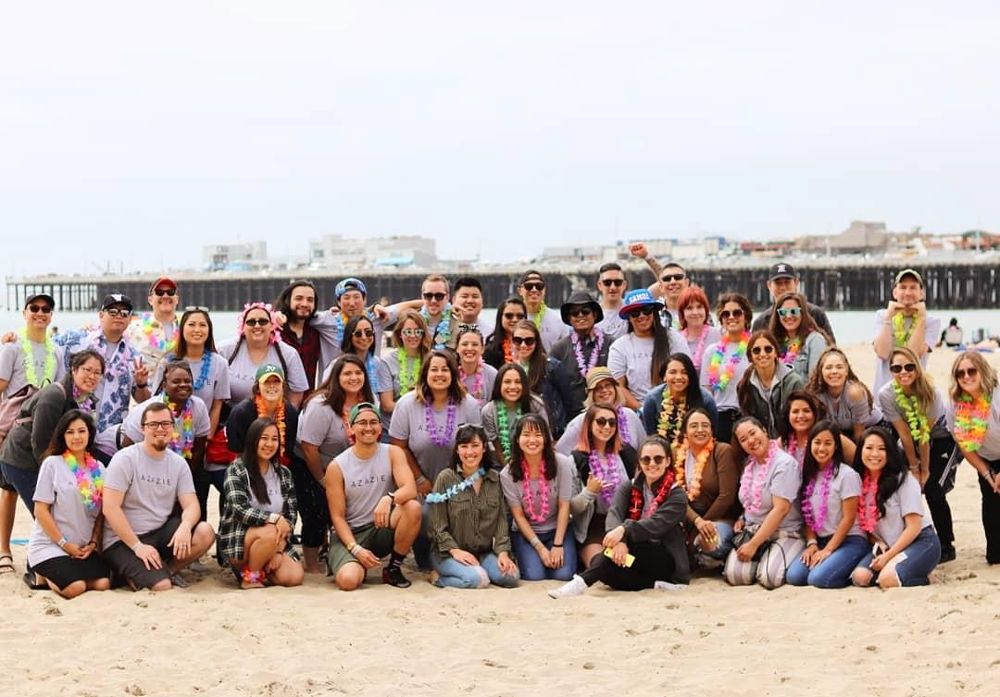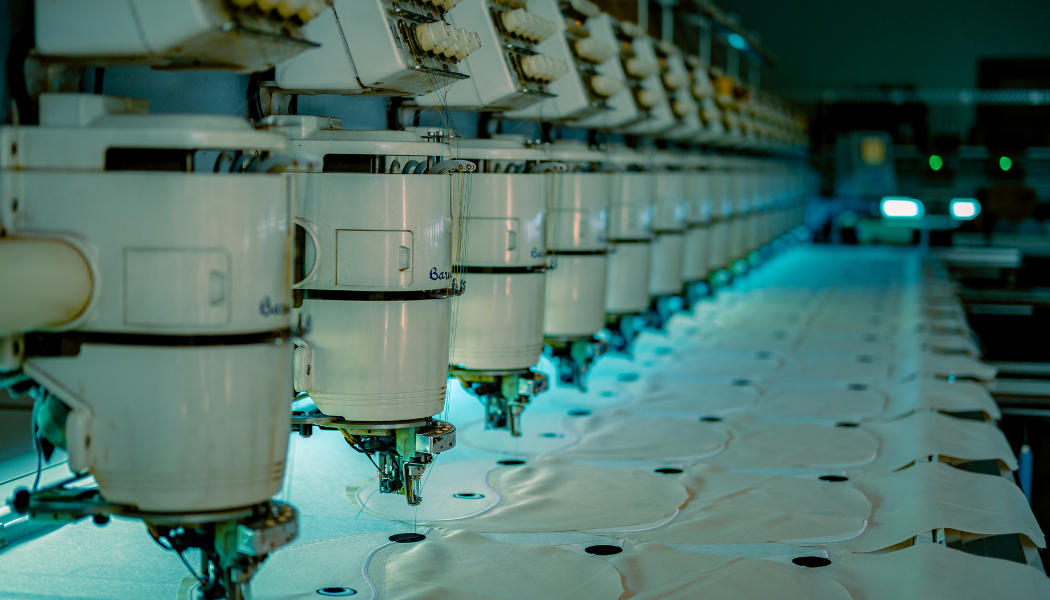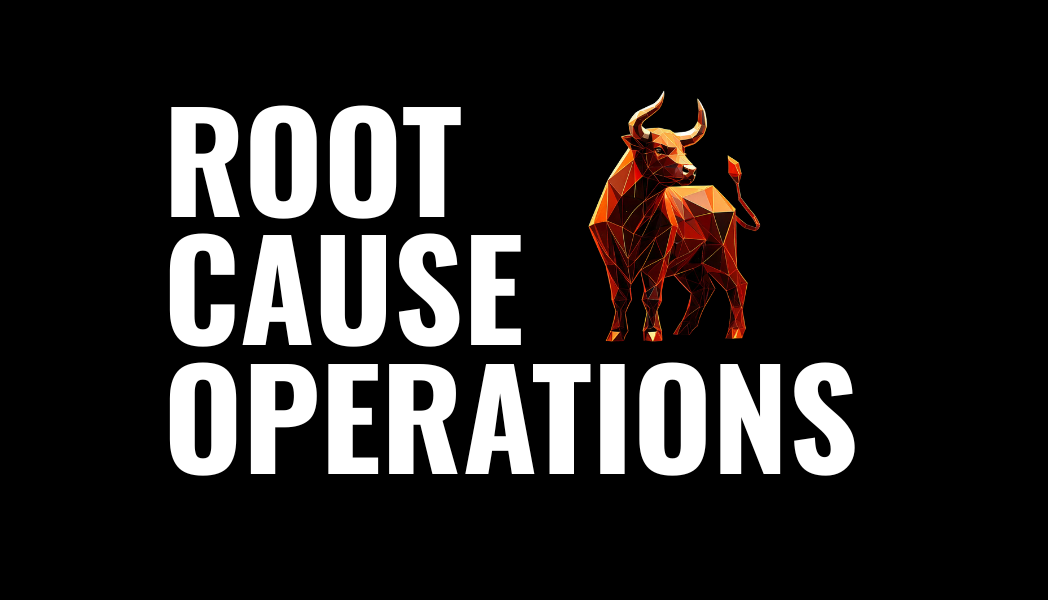BRIDAL STARTUP ESCAPED $24 MILLION TARRIFF APOCALYPSE



The fashion industry has a dirty little secret that nobody talks about at cocktail parties in San Francisco or pitch meetings in Sand Hill Road. For all the talk of innovation and disruption, most of the "revolutionary" direct-to-consumer brands that have captivated VCs over the past decade have built their businesses on a house of cards, one that sits directly on the shores of the South China Sea.
While their pitch decks highlighted proprietary algorithms and customer acquisition strategies, their actual profit margins depended almost entirely on something far less sexy: the massive manufacturing arbitrage available in a small cluster of Chinese factory towns.
It's the oldest play in capitalism, find something that costs X to make in America, make it for X/5 somewhere else, and keep the difference. Nothing wrong with that, except when you forget that you're not just capturing an arbitrage, you're making a geopolitical bet that the conditions enabling that arbitrage will continue indefinitely.
The Invisible Vulnerability
For one high-flying e-commerce bridal wear company, let's call them "White Silk", this bet had paid off spectacularly. Founded by one immigrant husband who had no background in fashion but understood customer acquisition costs with religious precision, the company had grown from zero to $24 million in annual revenue in 15 years.
"They were the darling of the consumer VC world," explains Esther, the consultant who would eventually save them from disaster. "Their pitch was seamless: 'We're vertically integrated, we've cut out the middleman, we control the entire process from design to delivery.' But what nobody asked was where, exactly, this miracle margin was coming from."
The answer: 87% of their inventor (the foundation of their entire business) came from a single industrial region in China. The same region that made wedding dresses for David's Bridal, the same region that supplied nearly every major bridal retailer in the Western world.
This concentration created an invisible vulnerability that didn't appear on any balance sheet or risk disclosure. It was the equivalent of a hedge fund putting 87% of its capital into a single position without telling its investors.
If any disruption hit that specific ecosystem...a local environmental regulation, a power grid issue, a labor dispute...their entire supply chain would collapse simultaneously," clarified Esther.
The company's founder was brilliant at marketing, fundraising, and Chinese production. They had built a genuinely innovative front-end business. But they had unwittingly coupled it to an extraordinarily fragile back-end that was one geopolitical hiccup away from implosion.
The Overnight Tariff Expert
The wake-up call came when rumors of new tariffs began circulating in Washington. For most tech startups, tariffs were an abstraction, something that might affect quarterly iPhone sales or the price of server components. For White Silk, they represented an existential threat.
"I remember getting the call," Esther says. "The VP of Operations phoned me at 11 PM on a Wednesday. He'd just finished running the numbers on what a 25% tariff on Chinese textiles would do to their margin structure...it would vaporize approximately $24 million in projected revenue for the coming year."
For a venture-backed company with investors expecting hockey-stick growth, this was a potential death sentence. Their entire economic model had been built on assumptions about the cost structure of Chinese manufacturing that were suddenly in jeopardy.
"What fascinated me was how quickly everyone at the company became overnight experts on U.S.-China trade relations," Esther continues. "The head of marketing, who a week earlier had been focused exclusively on Instagram conversion metrics, was suddenly diving deep into WTO precedents and the minutiae of textile-specific tariff schedules."
The CEO found himself in a world where the most important variable affecting his business was fundamentally unpredictable; the whims of trade negotiators and political calculations happening behind closed doors in Washington and Beijing.
The $8 Million Geography Lesson
Esther's team began with a radical inventory assessment. What they found surprised even the company's supply chain director, despite nominally having visibility into their manufacturing operations, they discovered that many of their own factories were in fact a separate company which would be required to pay the tariffs.
The solution required fundamentally re-engineering how the company thought about its supply chain. Esther's team built an AI-driven demand forecasting system that achieved a stunning 94% accuracy rating, allowing the company to make much more precise inventory commitments.
This precision created the flexibility needed to diversify manufacturing across Vietnam, Mexico, and India without maintaining the excessive safety stock that had previously been necessary. Inventory days-on-hand dropped from 47 to 31 while product availability actually increased.
The real art was in the contract structures. Rather than signing long-term fixed commitments, Esther designed a sophisticated tiering system that allowed for rapid scaling based on market conditions. Core products would have committed volumes, while seasonal and trend-driven items could flex based on real-time demand signals.
"In venture capital terms, we essentially rebuilt their supply chain as a set of options rather than obligations," Esther says. "They paid a small premium for the self-ownership but gained tremendous strategic flexibility."
The transformation wasn't cheap, it required significant investment in systems, new supplier relationships, and logistics reconfiguration. But the math was compelling: $2 million in immediate operational savings in the first quarter alone, followed by $8 million boost in profits through supply chain repositioning over the next year.
And lurking in the background was that $24 million potential tariff hit they'd now largely immunized themselves against.
The Day the Supply Chains Broke
The real validation came faster than anyone expected. When global supply chains experienced a major disruption, White Silk's competitors found themselves with inventory availability plummeting to 71%, meaning nearly a third of their products were out of stock when customers tried to order.
White Silk maintained 97% availability throughout the crisis.
"That differential doesn't just mean they captured some extra margin during a tough period," Esther explains. "In bridal wear, a stockout is often a permanently lost customer. Brides have immovable deadlines. If you can't deliver, they go elsewhere and never come back."
The customer lifetime value preservation alone during this period was worth millions. But even more valuable was what happened to White Silk's competitive position. As competitors struggled with inventory gaps, White Silk gained market share that persisted long after supply chains normalized.
"The fundamental insight was treating supply chain risk as a core business risk, not just a procurement issue," Esther says. "Their founders had built an extraordinary front-end customer experience and brand. But they'd left the foundation of the business largely unexamined."
The VC Lesson
For the venture investors who had backed White Silk, the supply chain transformation offered a profound lesson about risk and value creation. Despite pouring millions into their portfolio companies' growth marketing, product development, and engineering, few VCs were asking penetrating questions about supply chain concentration risk.
"In tech, we've been conditioned to look for software margins, those beautiful 80-90% gross margins that come with effectively zero marginal cost," explains James Wilson, a partner at the firm that led White Silk's Series B. "But in physical product businesses, even digitally-native ones, the supply chain is where those margins live or die."
Wilson estimates that across his firm's consumer portfolio, at least 60% of companies have supply chain concentration risks similar to what White Silk faced and risks that aren't adequately captured in valuation discussions or due diligence processes.
"We now ask every physical product company in our portfolio to model what happens if their primary manufacturing region becomes inaccessible for 6-12 months and if their manufacturing plant is part of the same company. The answers are often terrifying."
The White Silk case reveals a curious blind spot in how venture capital approaches direct-to-consumer businesses. VCs obsess over customer acquisition costs, retention metrics, and unit economics, but often leave the most fundamental aspect of unit economics, where and how products are actually made, relatively unscrutinized.
The $24 Million Bullet Dodged
By the time the tariffs that had initially triggered White Silk's supply chain overhaul actually went into effect, the company had reduced its exposure to the affected regions by more than 60%. The financial impact, while still significant, was manageable rather than existential.
More importantly, the company had transformed a critical vulnerability into a strategic advantage. Their ability to maintain inventory availability when competitors couldn't became a powerful selling point with customers and eventually a barrier to entry for newer players who couldn't match their supply chain sophistication.
"The most interesting part is how this back-end transformation changed the company's valuation profile," Esther notes. "Before, they were valued like any other DTC brand, primarily on revenue growth and contribution margin. After demonstrating supply chain resilience through a crisis, they began to be valued more like a technology company, for their systems and operational moat rather than just their brand and growth."
"In venture, we talk endlessly about defensibility," Wilson reflects. "Usually in terms of network effects, proprietary technology, or brand strength. But White Silk showed that operational excellence in the unglamorous parts of the business can create just as much defensible value."
For Esther, the lesson is even simpler: "The smartest entrepreneurs should not optimize for today's conditions but build optionality for tomorrow's uncertainties. And sometimes, the best return on investment doesn't come from chasing the next shiny technological breakthrough, but from taking a hard look at the foundations your business is built on."
In the world of venture capital, a $2.4M investment that prevents a $24 million loss while creating a sustainable competitive advantage is the kind of asymmetric return that most firms only dream about. And it all came from looking at the part of the business that nobody at the pitch meetings wanted to talk about.
